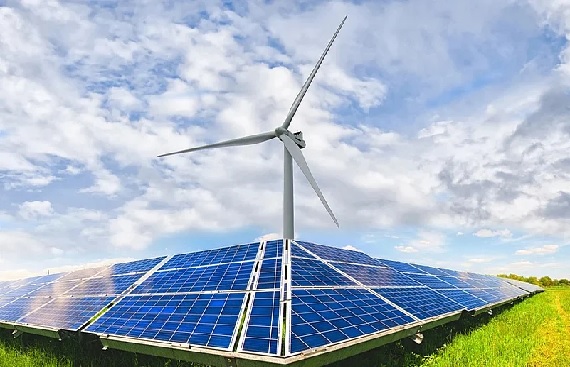India Achieves 50% Non-Fossil Fuel Capacity, Faces Coal Reliance Challenge
By
siliconindia | Wednesday, 20 August 2025, 12:33 Hrs

- Non-fossil fuels now account for half of India’s installed energy capacity, five years ahead of the 2030 target.
- Coal generates over 74% of electricity, and production rose by 5% last year, highlighting ongoing dependence.
- Limited energy storage capacity restricts renewable use, making India reliant on coal and imports of rare earth metals.
India has reached a major milestone in its energy sector, with non-fossil fuels now accounting for half of the country’s installed power capacity. The achievement came five years ahead of the original 2030 target under the Paris Agreement, and Renewable Energy Minister Pralhad Joshi described it as 'a landmark in India’s energy transition journey'. He said it is a key step towards India’s broader goal of reaching net-zero emissions by 2070.
While the 50 percent mark is significant, experts warn that it only reflects installed capacity the potential to generate electricity rather than actual production. Climate expert Avantika Goswami of the Centre for Science and Environment noted that renewable energy generation is still low. Nearly three-quarters of India’s electricity comes from coal-fired power plants, which are highly polluting.
India’s reliance on coal has not decreased. The country, the second-largest consumer of coal in the world, increased production by five percent last year, mining one billion tonnes. The coal ministry described this as part of 'India’s coal boom', noting that coal is essential for meeting energy demands and supporting industries such as steel and cement. Coal still supplies over 74 percent of the nation’s electricity, highlighting the challenge of transitioning to cleaner energy while meeting growing demand.
Globally, India is the third-largest emitter of greenhouse gases after China and the United States. However, per capita emissions remain low, at about one-third of the global average, given its population of 1.4 billion. Climate activist Harjeet Singh of the Satat Sampada Climate Foundation said that considering India’s size and development needs, it is making notable efforts. The country has pledged to cut emissions by 45 percent by 2030, even as electricity demand is expected to more than double by 2047. Meeting this growing demand while reducing emissions will require expanding renewable power and improving storage systems.
India’s total installed power capacity is 484.8 gigawatts, with half coming from non-fossil fuel sources. Solar energy leads with 119 gigawatts, making India the third-largest solar producer in the world. Massive solar and wind farms are under development, including one in a desert area the size of Singapore. Hydropower, wind, and nuclear energy make up the remaining share, with nuclear contributing less than two percent.
Renewable energy is intermittent, generating power only when the sun shines or the wind blows. India currently has just 505 megawatt-hours of storage capacity, far below what is needed to use renewable power efficiently. Minister Joshi highlighted the issue during the launch of a battery storage plant in June, warning that without storage, India risks either wasting renewable energy or reverting to coal during shortages.
Battery storage requires rare earth metals, largely controlled by China, which supplies about 70 percent of global demand. This dependency was reportedly discussed during Chinese Foreign Minister Wang Yi’s visit to New Delhi. India is also exploring pump-hydro storage projects, where excess renewable energy pumps water into reservoirs that can later generate electricity during peak demand.
Experts emphasize that a successful energy transition requires multiple approaches. Goswami said India must reduce emissions from inefficient coal plants, better integrate renewable sources into the grid, and develop reliable storage systems. These steps are necessary to reduce dependence on coal while meeting rising electricity needs.
Reaching 50 percent non-fossil fuel capacity ahead of schedule is a significant achievement and demonstrates India’s commitment to renewable energy. Yet coal’s continued dominance in actual electricity generation shows the scale of the challenge ahead. With electricity demand expected to double over the next two decades, India will need to balance growth, clean energy, and coal reliance carefully. Storage technology, resource diversification, and coal efficiency improvements will play a key role in shaping the country’s energy future.
